Montserrat – Working in Paradise
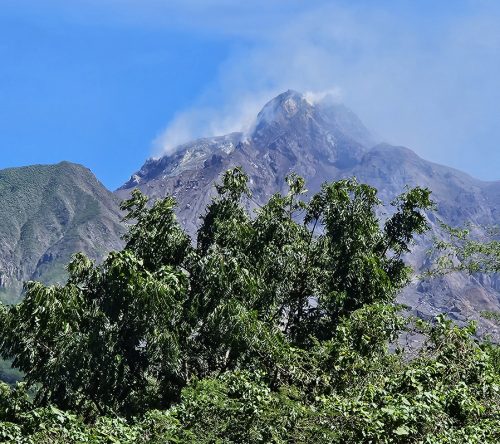
Montserrat is a beautiful, small island in the Caribbean. I was lucky enough to be invited to visit for a week, to teach botanical illustration, and had time to explore this island paradise at the same time.
Arriving
You arrive in Montserrat airport via a little plane from Antigua, skimming low over the volcanic island. Catherine Wensink from the UK Overseas Territories Conservation Forum (UKOTCF) met me at the airport, with biologist and educator Rebecca Machin.
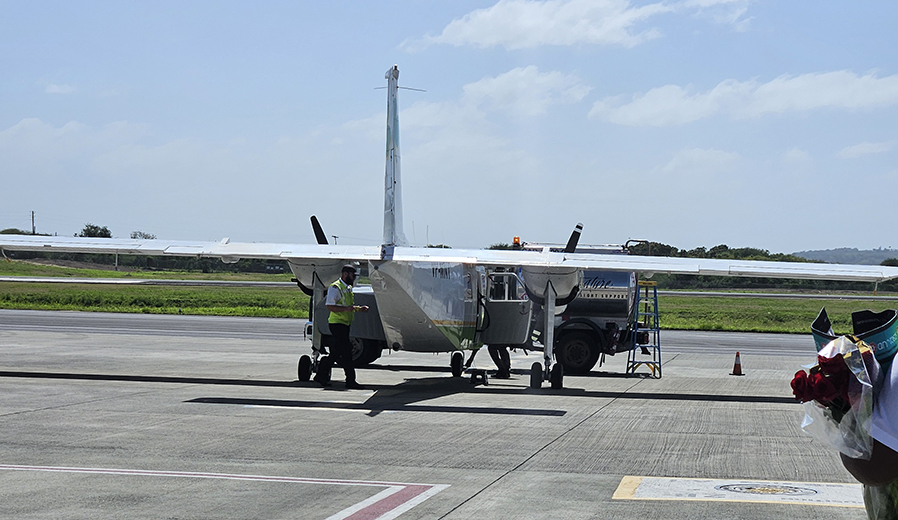
There was quite a team of us working on different aspects of Montserrat biodiversity; over the week I met ecologist Jodey Peyton, entomologist Wolfgang Rabitsch, and botanists Sophie Meeus and Quentin Groom. We all got to liaise with government ministers as well as the Montserrat National Trust.
First impressions of Montserrat
Montserrat is vertiginous, a volcanic isle swathed in lush vegetation. Roads are steep. Mangoes drop their fruit to the ground where you can gather and eat them. Stalls sell coconuts, bananas, and eggs. Wild agouti and incredibly well-fed feral chickens, goats, and donkeys stray about. The sun is hot and the breezes warm. Short violent rain showers accompanied by wild winds pass swiftly and mostly happen at night. Wild iguanas lie in the sun and zenaida doves waddle along the roadside. The Souffrière hills, site of the volcano that erupted from 1997 – 2010, tower above the island. The active volcanic peak is mostly swaddled in cloud.
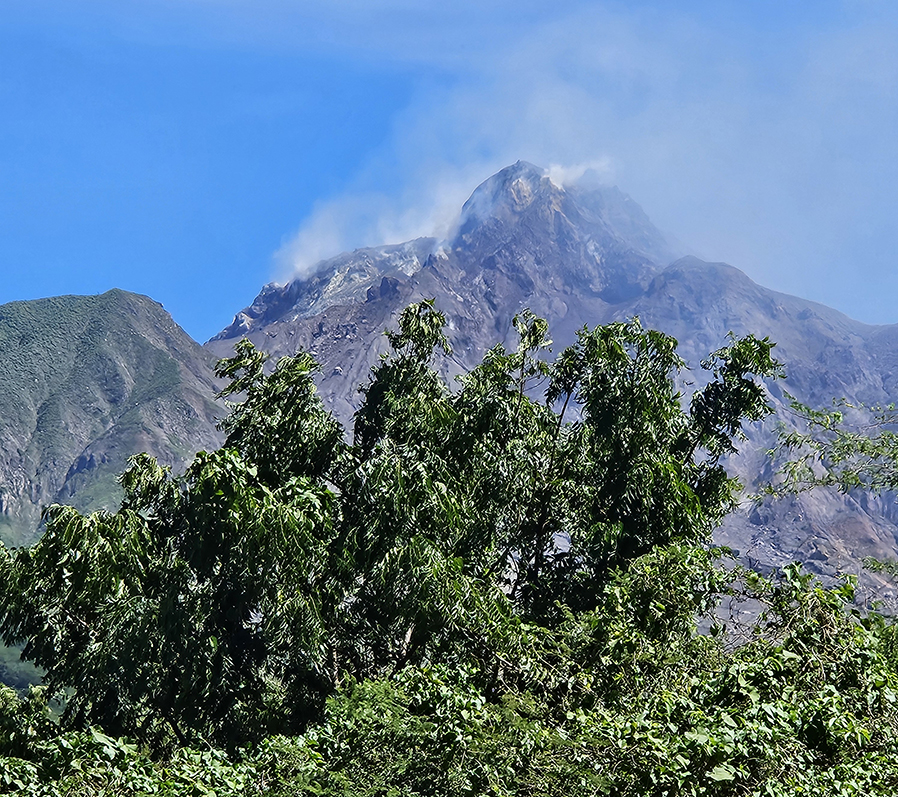
The Souffrière hills – active volcano. Photo taken from the exclusion zone.
The houses dot the hillside, painted absurdly pretty bright colours. They’re interspersed with snack bars and tiny cafes. People wave and honk their horns at each other in friendly salutation.
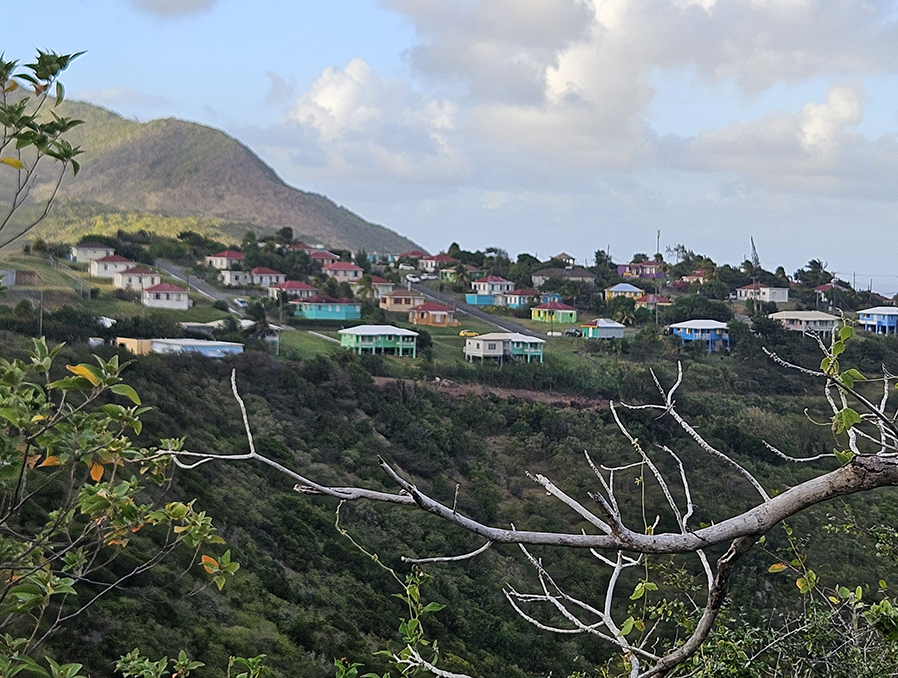
View of Look-out village from Jack Boy Hill
Visiting Elvis Gerald’s Garden
My first full day included a trip to garden I was very keen to see. Having worked with Elvis Gerald on an idealised plan of his garden, it was a treat to see the spaces in real life, burgeoning with fruit, vegetables, and flowers. I’ll write a separate blog about his gardens as they were truly impressive.
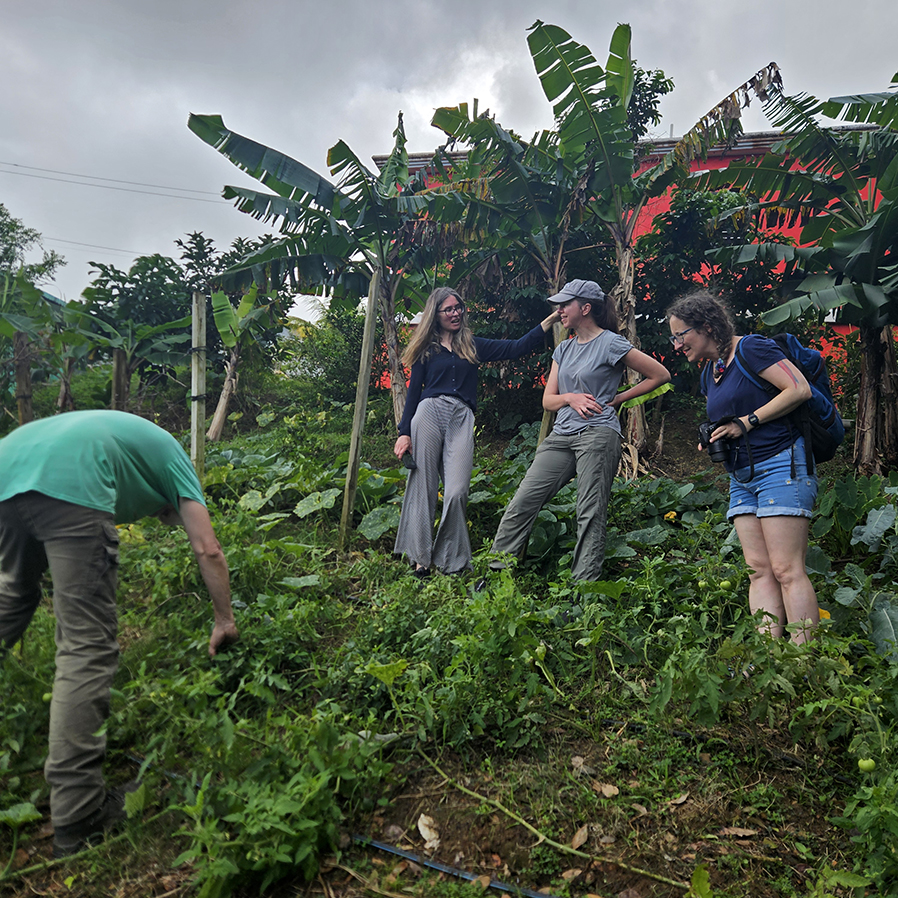
Visiting Elvis Gerald’s garden with Catherine Wensink, Jodey Peyton, and Rebecca Machin
Montserrat National Trust: Monty’s Messengers & Ambassadors
Much of the conservation work being done is supported by the Montserrat National Trust, a very active organisation headed by Sarita Francis.
As well as hosting my illustration workshops, they had a session on preserving herbarium specimens with Quentin and Sofie.
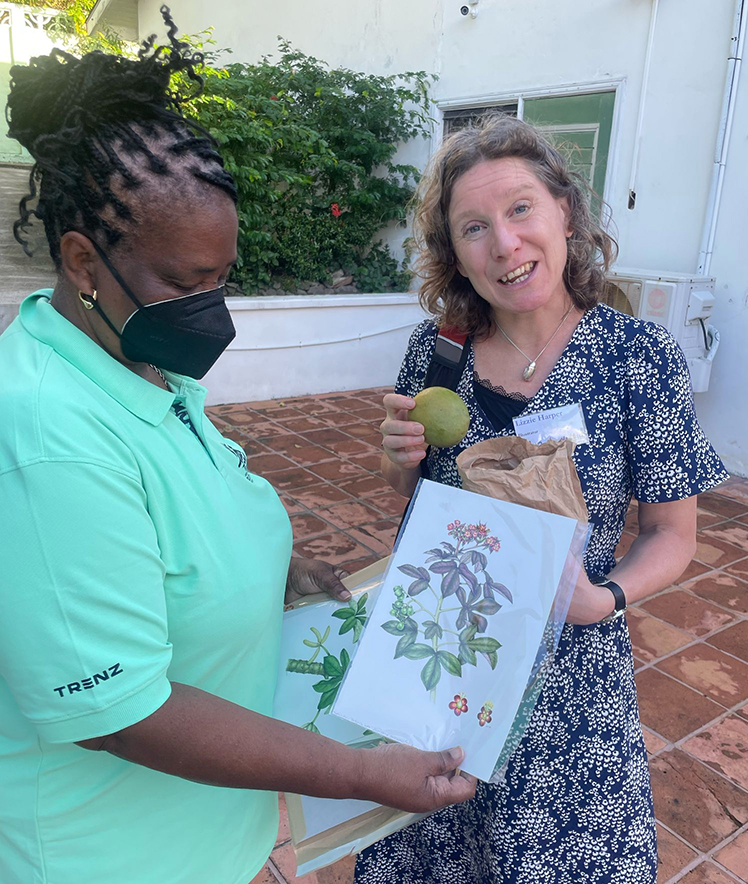
Sarita Francis OBE and me – presenting MNT with original illustrations
The MNT hold scientific conferences and run the Botanical Gardens, and are also very involved in promoting the importance of cherishing the biodiversity of the island; to visitors, residents, and especially to children.
Not only do they promote wildlife and nature on the island, they also have a gift shop which sells, amongst other things, tea towels and mugs featuring some of my Medicinal Plants of Montserrat illustrations. I was delighted to receive a mug featuring my botanical illustration and a tote bag from Mrs. Francis.
Teaching at Montserrat National Trust
My contact is Chris Sealys, Conservation officer at MNT. Chris engages with local kids and young adults through Monty’s Messengers (for youngsters) and Monty’s Ambassadors. Activities focus on teaching all aspects of natural history through fun activities, in the hope that prioritising the biodiversity of Montserrat will remain a life-long passion.
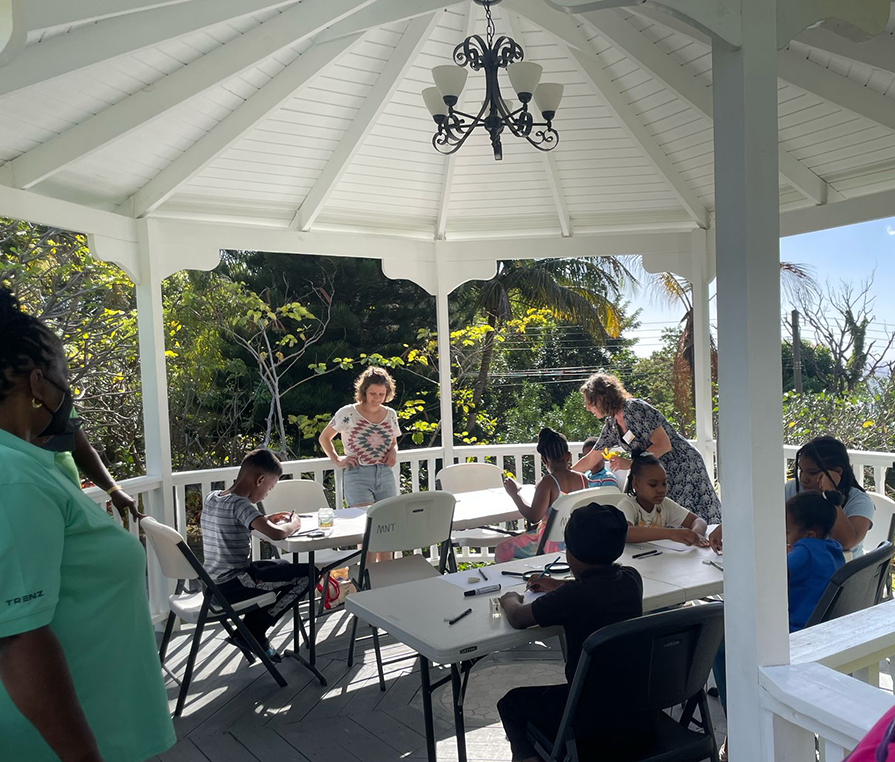
Monty’s messengers teaching workshop in the Botanic gardens’ pagoda
Monty’s messengers came and drew with me; I’d brought resin encapsulated insects to inspire them, but also offered them native flowers from the gardens. They did some terrific work, despite never having used watercolours before and some being really quite young.
Rebecca took them on a biodiversity rainbow hunt, and was amazed and how much they knew about the plants in the gardens and their local uses. Sadly, this is something we seem to have lost a long time ago in the UK.
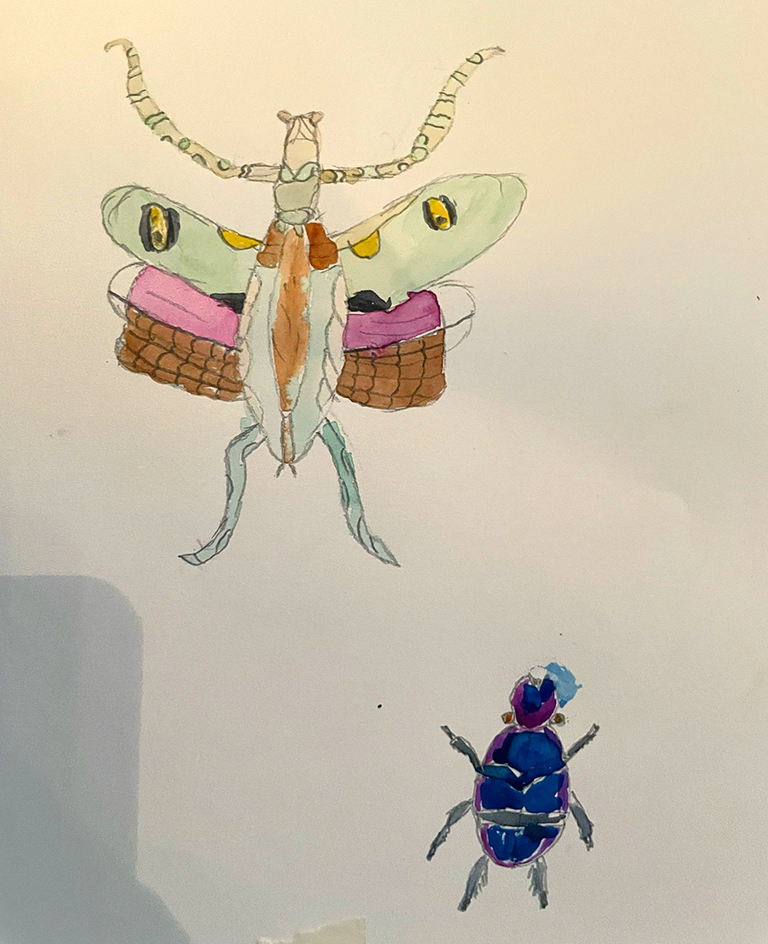
Praying mantis and beetle illustrations by Monty’s messengers
Monty’s Ambassadors did some beautiful work too, really concentrating and working with flowers and the insects. They were so engaged, enthusiastic, and polite.

Monty’s Ambassadors at work
All I have to do as a teacher is provide encouragement and a few pointers if they get stuck. Seeing people enjoy drawing is such a thrill, their enthusiasm for combining art and the natural world gives me a lot of joy.
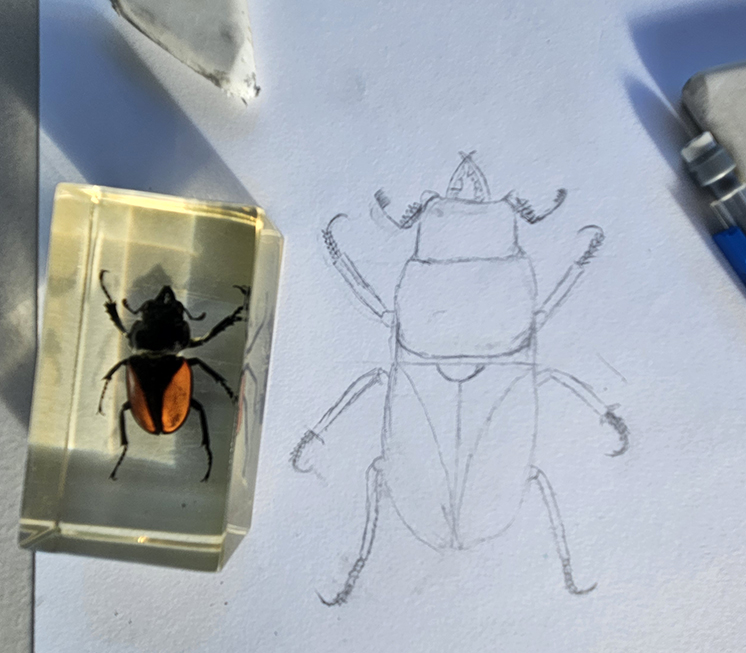
Detailed pencil drawing by one of Monty’s Ambassadors
Working alongside Chris was great, he sees that you can embrace nature even if you’re not academically strong, and understands how art should stand alongside exams and school work as another way of getting youngsters involved in promoting and committing to Montserrat’s natural world. He brought these ideas to the meetings we had with the Montserrat Government, and no doubt inspired both the arts council and education minister.
Teaching at Montserrat National Trust: Adult session
On Sunday I got to teach adults for a longer session called Nature meets Artistry. We worked with the native and ornamental species form the botanical gardens and some of the roadside flowers I’d picked.
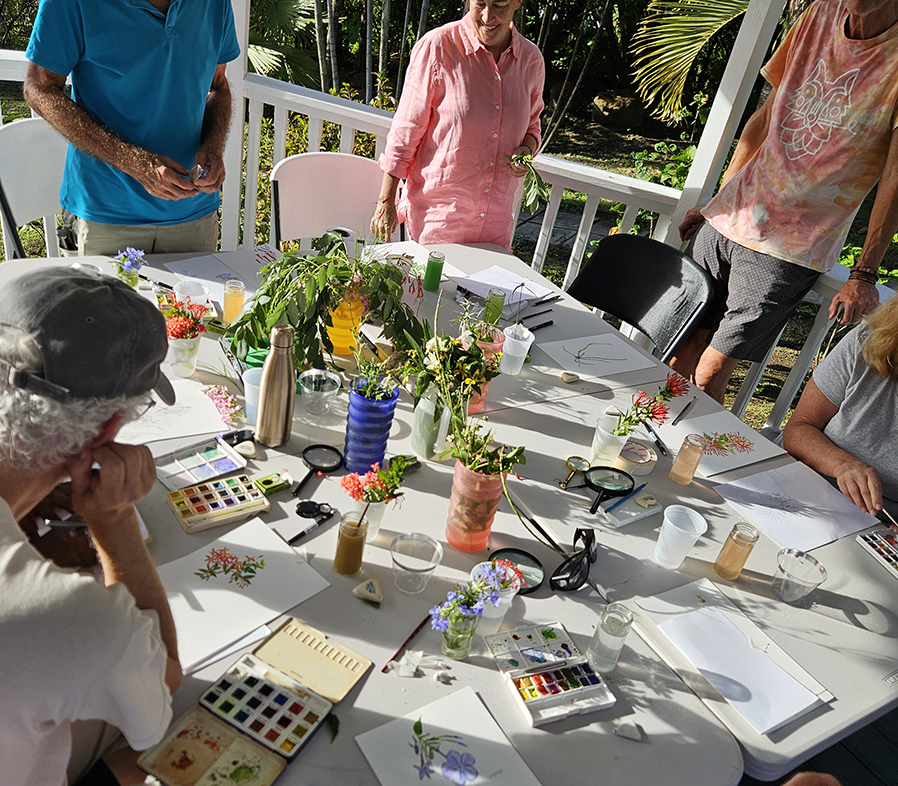
Nature meets Artistry session
I never know what plants people will choose to draw, and not only did the beautiful Plumbago auriculata get chosen, but one student took on the overlooked native Tridax daisy, Tridax procumbens.
As with the younger artists, my students applied themselves whole-heartedly and produced some lovely work. I really enjoy seeing people learn more about plants by drawing them, and this was no exception.
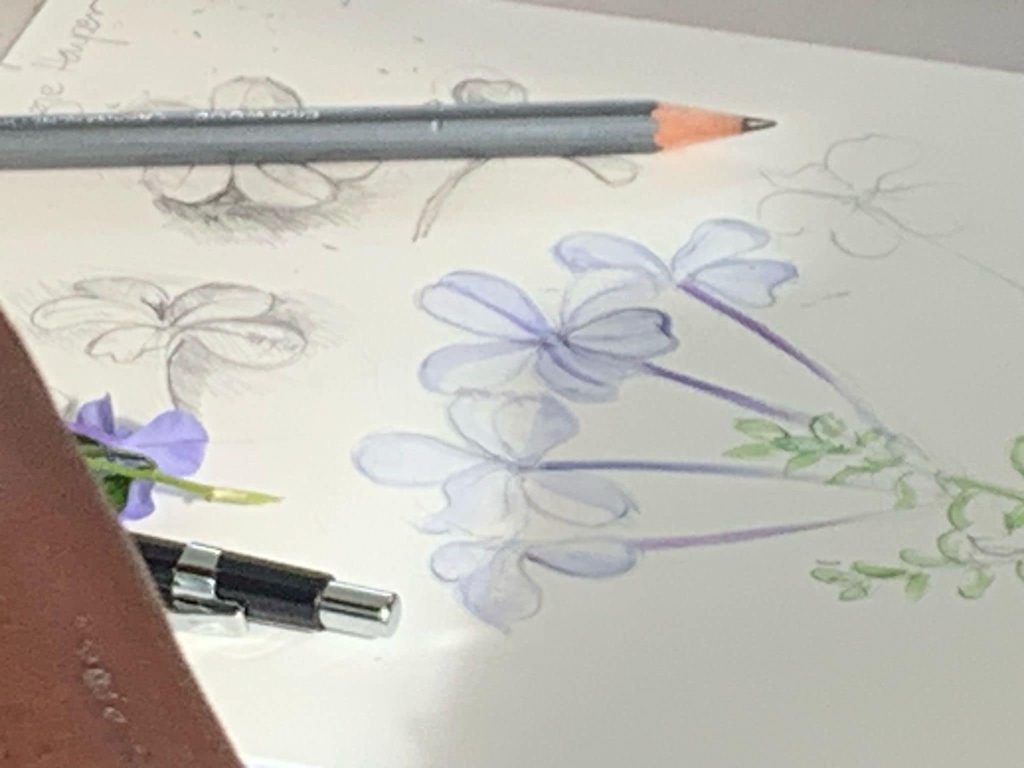
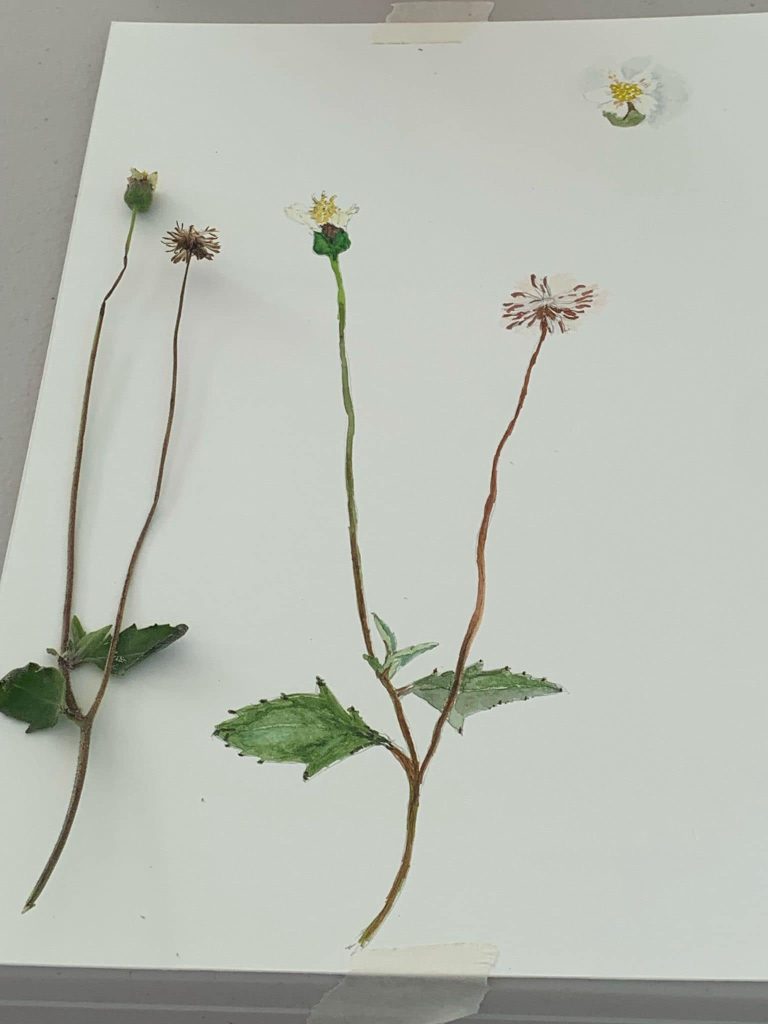
Students’ pencil and watercolour illustrations of Plumbago and the Tridax daisy
Meeting the Arts Council and the Department of Education
I spend most of my life in my studio, illustrating plants and animals in splendid isolation. For me, working alongside the MNT and the scientists and UKOTCF was novel, and a treat. Spending time with people who care about the same things you do; and will tell you when fruit bats are eating mangoes, or go up sheer rock faces questing for unusual plants, or get over-excited about seeing a Tarantula hawk wasp…it was refreshing and inspiring.
These were the people who I joined for meetings with Montserrat’s Arts Council and Education department.
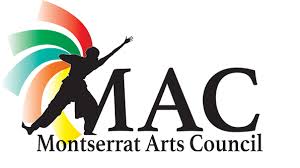
Logo of Montserrat’s Art Council
As well as not usually working in a team, I have very little experience of official meetings. Although I felt a little intimidated, it was a wonderful opportunity to be able to share some of the benefits I feel come from drawing wildlife and plants.
Seeing Chris, Sarita, Catherine and Rebecca encouraging links between the government, education, arts council and Montserrat National Trust; and promoting the biodiversity of Montserrat was fascinating. I hope the meetings will bear fruit.
Wildlife Walk
One of the fascinating things we did when I wasn’t teaching was to join Loydie on a nature walk up the Dry Waterfall Trail. Loydie is one of the excellent and highly knowledgeable guides working with Scribers Adventures. These trails are well maintained by the MNT; within moments you feel enveloped in the jungle but the route was easy to negotiate.

Loydie explaining epiphytic plants and vines to us on Dry Waterfall trail
We learnt an enormous amount about the trees, ferns, birds, and insects all around us. We even saw the endemic Montserrat oriole amongst foliage, and saw wild heliconia in bloom.
Tour of the exclusion zone
After visiting Montserrat Volcanic observatory, a state of the art monitoring site keeping an eye on the still-active volcano, we joined the fabulous Norman Cassell of Namcas Tours for a visit to Montserrat’s exclusion zone.
After the volcano erupted in 1995, it continued to throw ash and pyroclastic flows across wide expanses of the island. Areas smothered included most of Montserrat’s agricultural land, its main port, the capital city of Plymouth, and the airport.
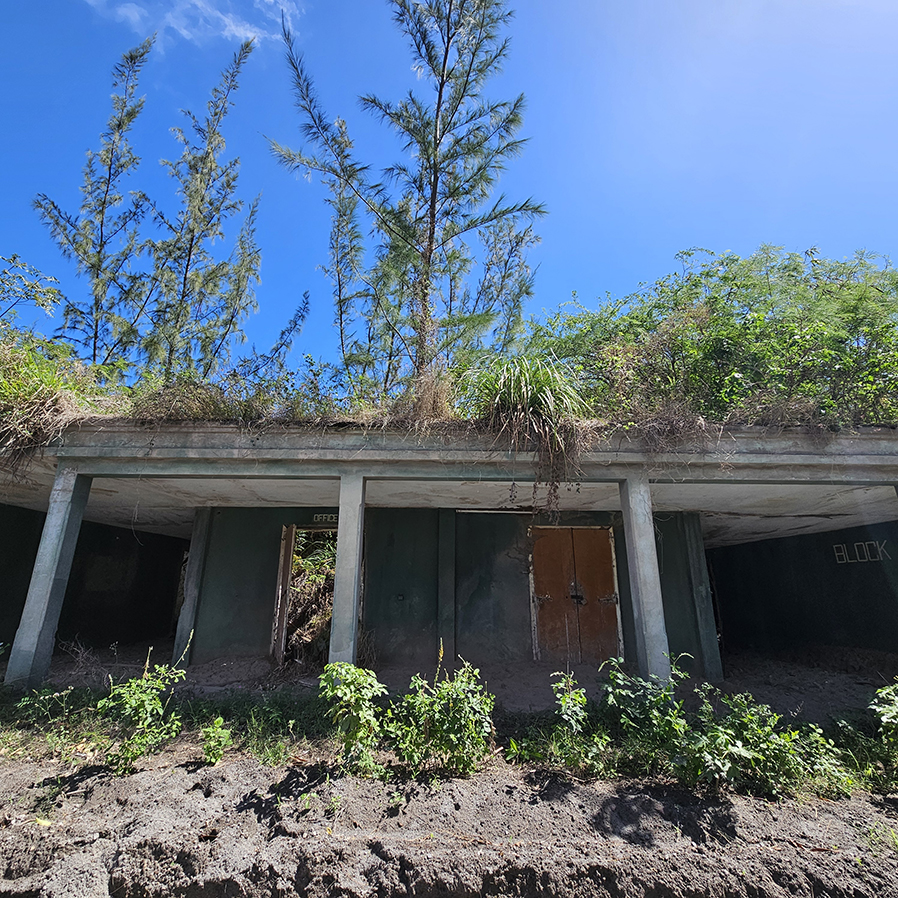
Half buried, view of the Secondary school Norman attended, in Plymouth’s exclusion zone
Norman brought his friendly enthusiasm, an immense knowledge, and memories of growing up as well as living through the eruptions to our tour. It was a joy and a privilege to spend time with him, and also incredibly moving to be allowed to see some small part of what has been lost to volcanic activity. The resilience of the Montserratians as they continue to reconstruct their future is extraordinary.
Teaching at Montserrat Secondary School (MSS)
There’s one secondary school on Montserrat, and I got to teach some of the art students for an hour. Thanks is due to the head of art, Mr. Kelvin ‘Tabu’ Duberry (a fine artist as well as a teacher), for allowing me to hijack his classroom.
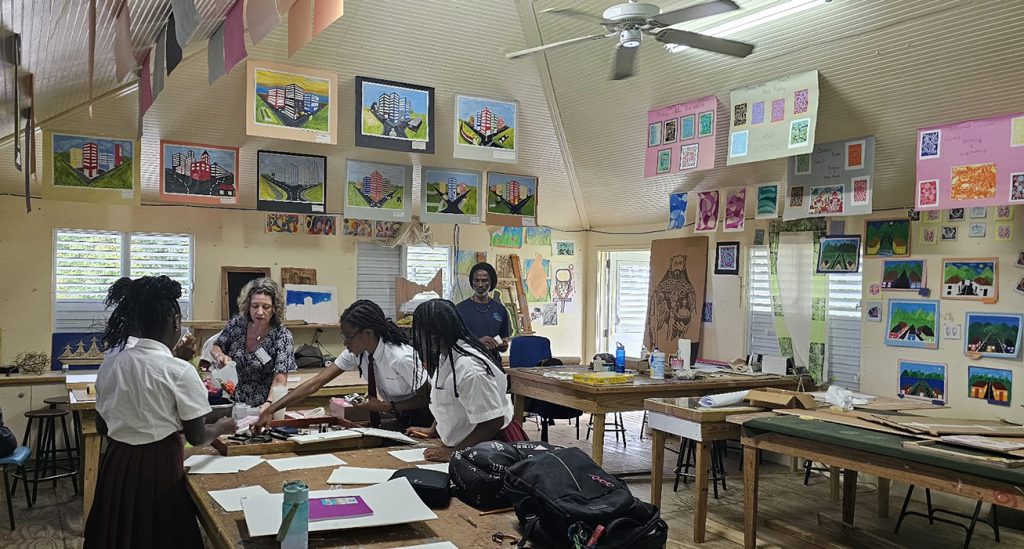
Teaching at MSS
Again, the students used pencil and watercolour and chose resin-encapsulated insects and plants as subjects. These teenagers are already very able, so seeing them tackling observational drawing and the new medium of watercolours was fascinating. They did some beautiful work, and managed to capture intricate details as well as some of the nuances of shine and iridescence on the elytra of the beetles.
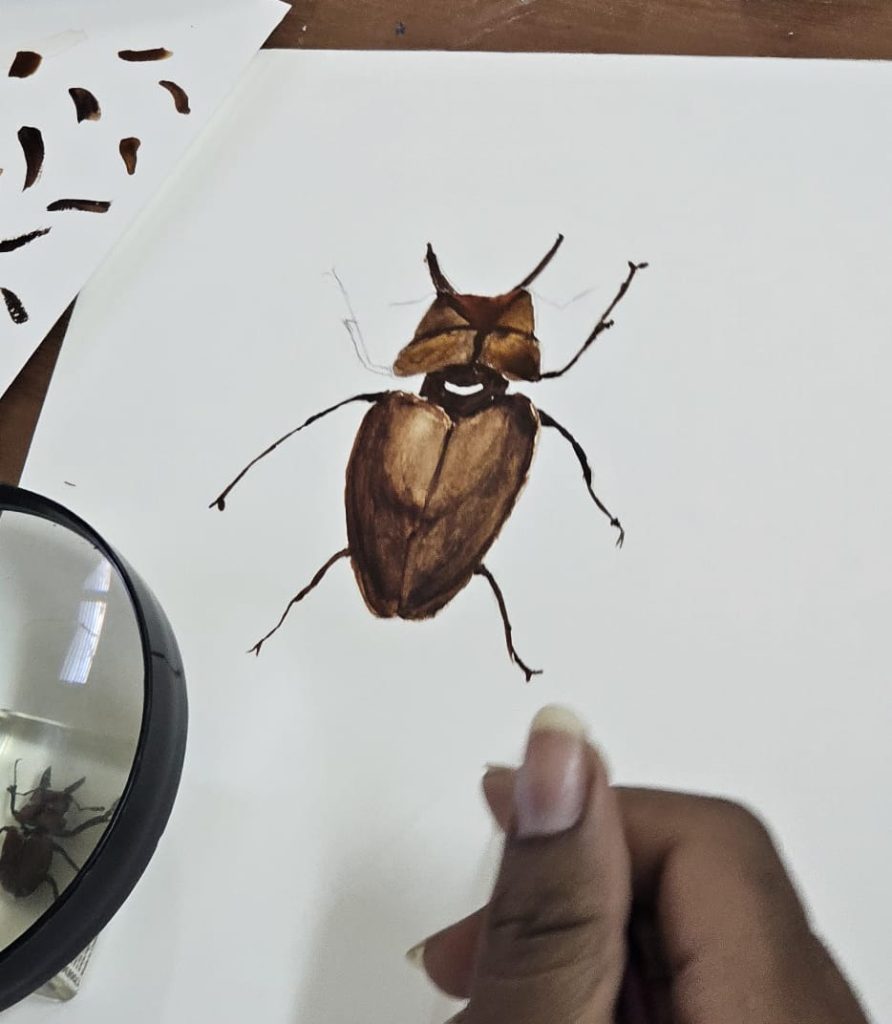
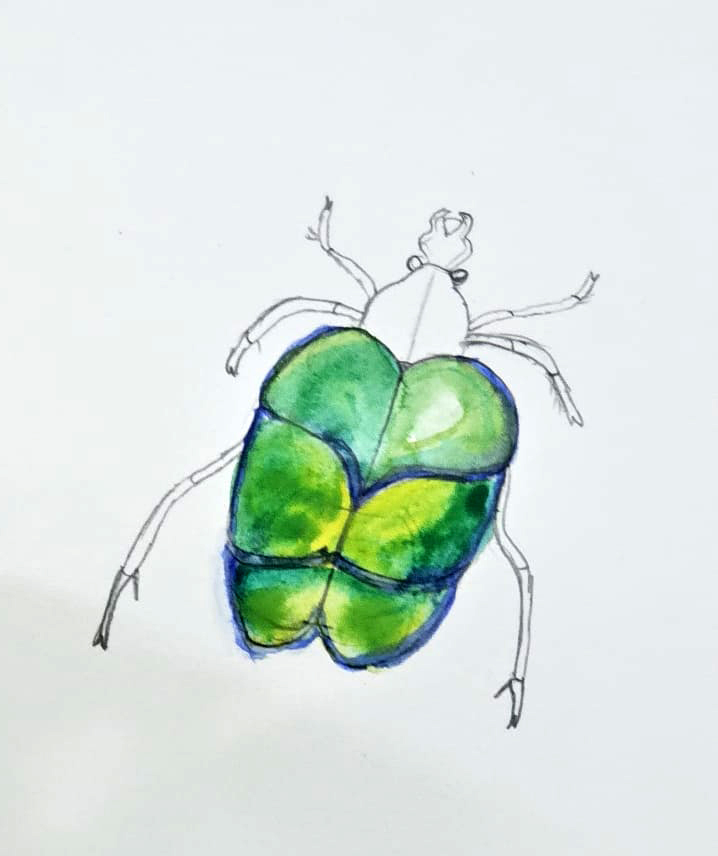
Two beetles painted by MSS high school students
Chatting to Mr. Duberry was interesting too, the amount of excellent work he manages to produce with limited resources is quite remarkable. At the end of the session I was touched and very pleased to be presented with a beautiful linocut done by one of the art students.
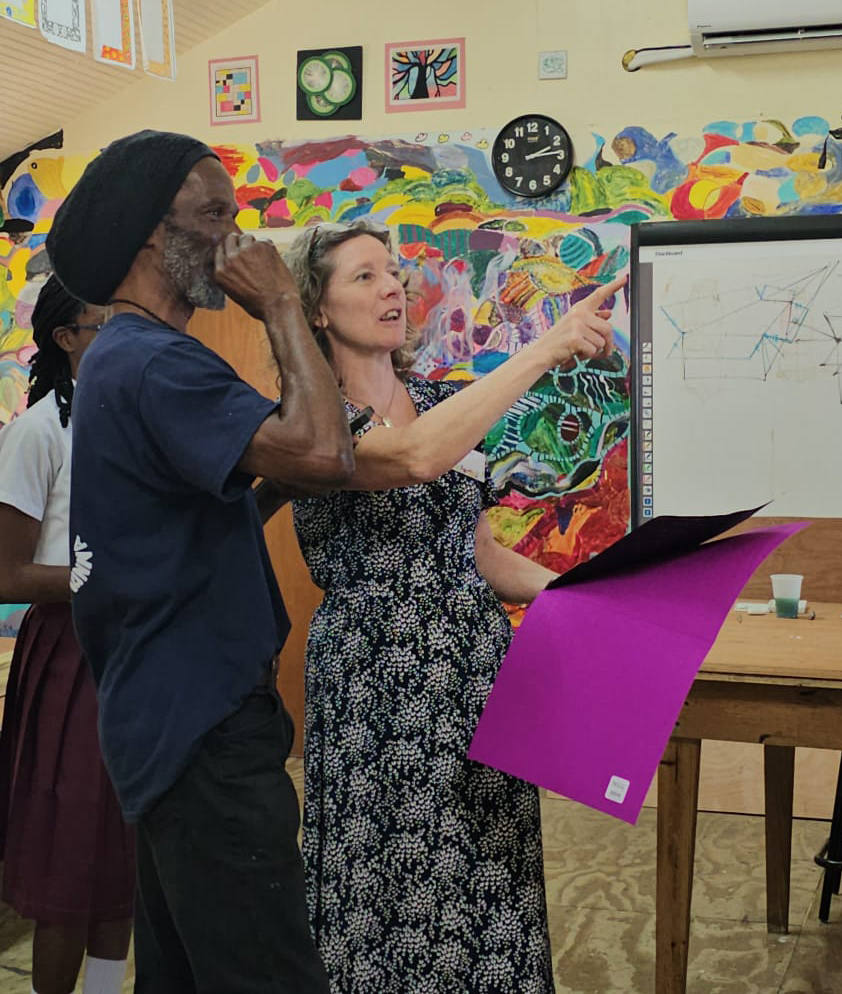
Me talking to Kelvin Duberry and holding the lino-cut I’ve been given.
Beaches and wildlife
There was plenty of free time to explore the island’s beautiful volcanic beaches. Snorkelling revealed pristine coral reefs, purple sea fans, shoals of large pale blue fish, sea turtles, saffron corals, angel fish, tiny fish like glittering sapphires, long-spined sea urchins, and spotted box fish.
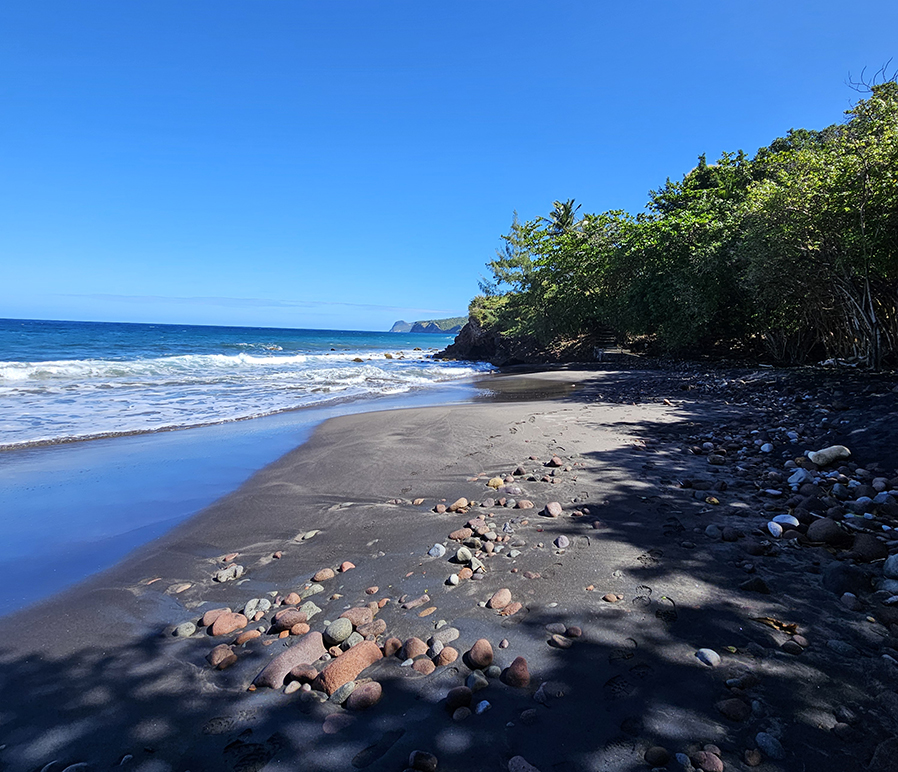
One of the beautiful volcanic beaches on Montserrat
The sea was warm, the sun was hot, the breeze was cooling but tropical. And the sunsets were glorious.
Wild animals on the island seemed pretty tame; we saw hosts of birds including the notoriously bold Pearly-eyed thrasher Margarops fuscatus and American kestrel Falco sparverius.
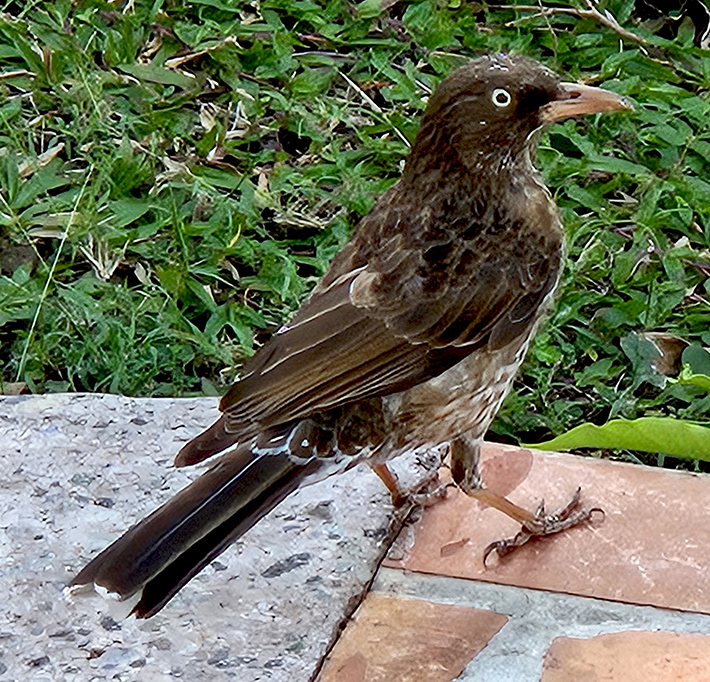
Pearly-eyed thrasher looking for crumbs. Bold as you like.
Above the ever-changing blues of the Caribbean sea we saw Brown pelicans Pelecanus occidentalis, Royal terns Thalasseus maximus, Tropicbirds Phaethon aethereus with their eerie cries, and Frigate birds Fregata magnificens.
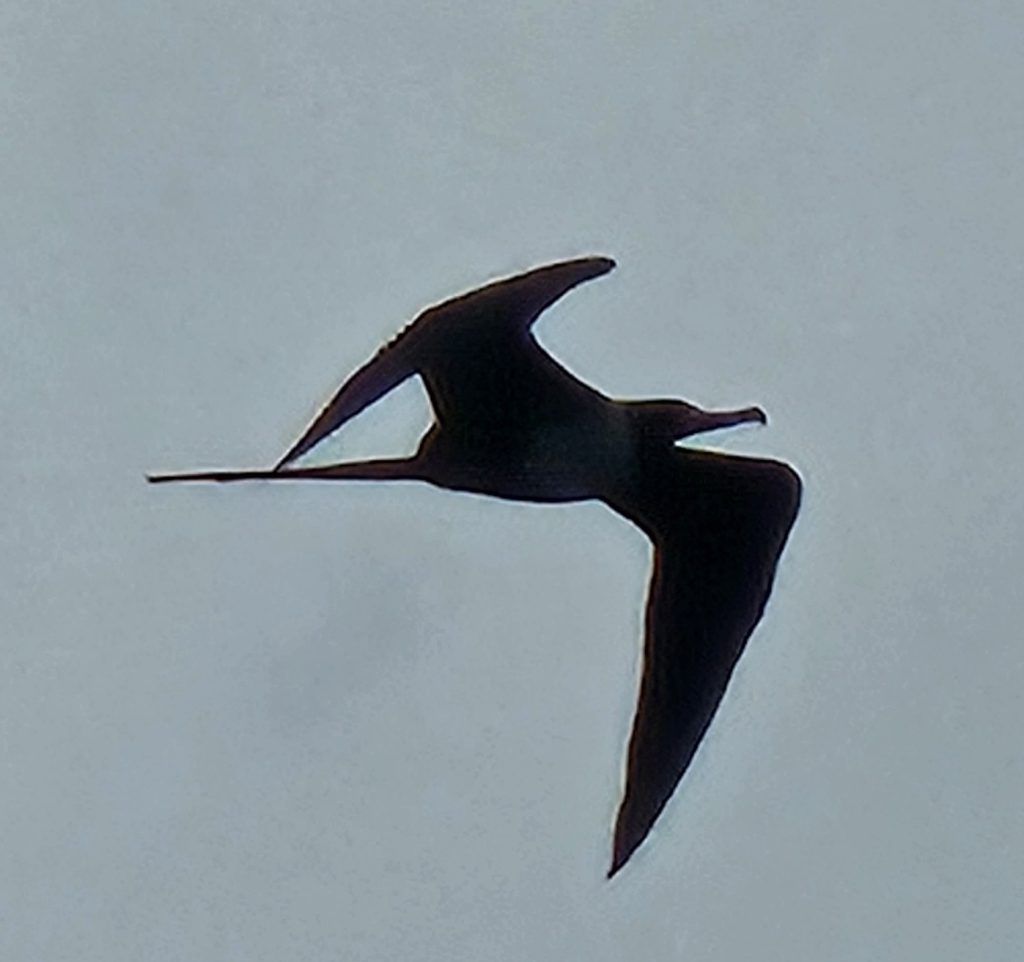
Magnificent Frigate bird Fregata magnificens in flight over Marguerita bay
These were easy to identify thanks to a handy wildlife guide to Montserrat, co-written by some of the people I was working with during my trip. However, I am well aware that there are many many more birds to spot on Montserrat. No wonder the guide is titled, “Birding in Paradise”!
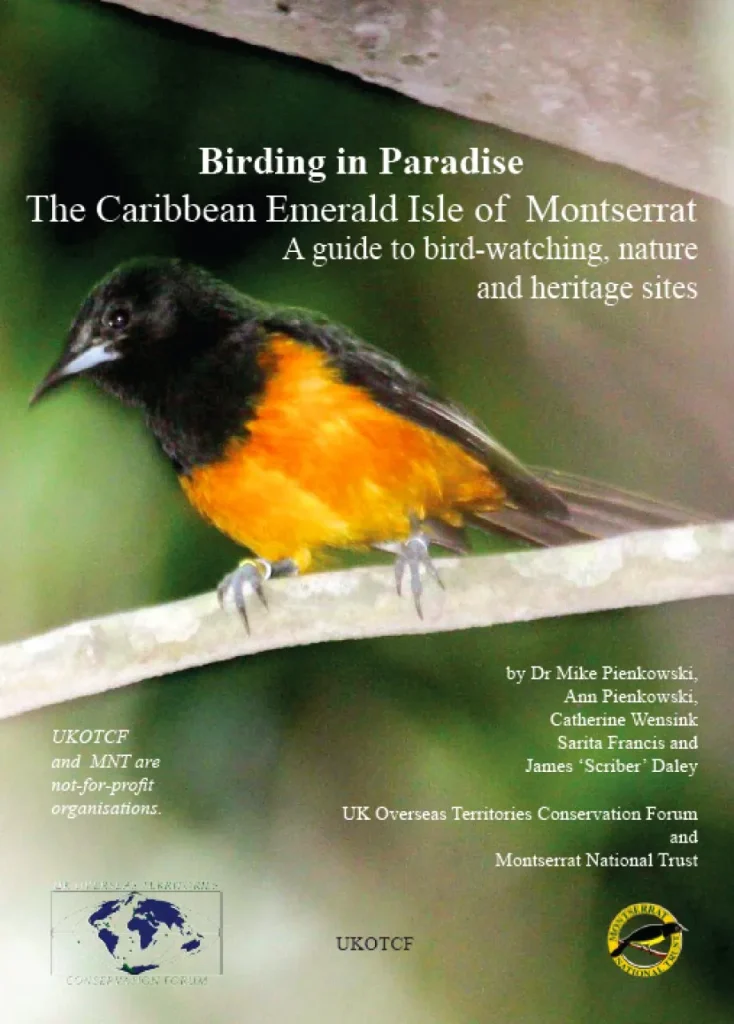
Birding in Paradise – authors include Catherine Wensink and Sarita Francis
Conclusion
This trip was one of the most wonderful weeks of my professional life. Everyone I met was committed and working incredibly hard to promote the biodiversity of Montserrat. They were friendly and fun, inspirational and enthusiastic. Montserrat itself is simply stunning, somehow retaining its’ sense of self and its friendliness as well as being abundantly generous to tourists. The plants are awe-inspiring, the volcano is beautiful and terrifying, the wildlife is accessible and jewel-like.
Will I be back? If I am useful enough to be invited back, I would commit to another week of teaching botanical illustration and nature drawing on Montserrat in a heart-beat. Birding in Paradise, yes. Illustrating in Paradise? I’d take that offer any day.
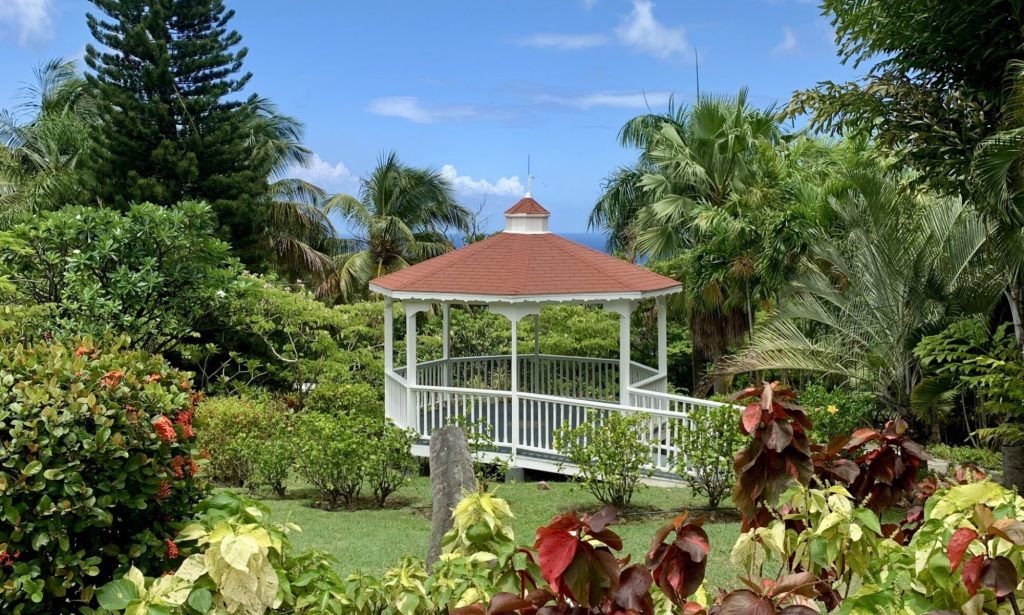
Gazebo at Montserrat national trust, site of my workshops.


They were lucky to have you wonderful woman!
Looks like paradise
Aww thanks Cath xxx It WAS paradise!